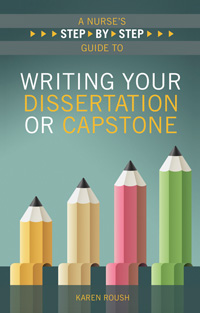Data from the Bureau of Labor Statistics (BLS) show that the health care
sector continues to be the most dangerous place to work in America.
According to the Occupational Safety and Health Administration (OSHA),
health care workers are confronted with the following job hazards:
bloodborne pathogens and biological hazards; potential chemical and drug
exposures; waste anesthetic gas exposures; respiratory hazards;
ergonomic hazards from lifting and repetitive tasks; laser hazards;
workplace violence; hazards associated with laboratories; and
radioactive material and X-ray hazards. In 2010, there were 653,900
workplace injuries and illnesses in the health care sector, which is
more than 152,000 more injuries than the manufacturing sector, according
to a 2013 Public Citizen report.
The paradigm for promoting nurse safety is changing, but slowly, and has
not kept up with the technology to prevent injury, says Amber Hogan
Mitchell, DrPH, MPH, CPH, president and executive director of the
International Safety Center. “There have been a lot of advances over the
last few decades to significantly improve nurses’ safety, but more can
be done to collect and analyze data that would help speed adoption of
innovative technology and spur swifter action to revise and implement
stronger safety-related best practices and policies.”
The issue of nurse safety is pervasive. Unfortunately, musculoskeletal
injuries are common from lifting patients without enough assistance.
Nurses lift the equivalent of 1.8 tons every eight hours. Unanticipated
exposures to blood and body fluids (BBFs) pose infection and illness
risks to nurses on a daily basis. In the process of caregiving, patients
or family members occasionally strike out at the nursing staff.
Assaults from patients and patient visitors are far from being listed as
isolated incidents.
“Health care has reached a critical tipping point,” says Alexandra
Robbins, author of the New York Times bestseller The Nurses: A Year of
Secrets, Drama, and Miracles with the Heroes of the Hospital. “With
looming physician shortages and an increasing demand for services,
workplaces will have no choice but to make changes to accommodate
nurses, our largest health care provider.”
Clinically Proven Textile Technology
About one in two nurses experience blood exposure, other than
from a needle stick, on their skin or in their eyes, nose, or mouth at
least once a month, according to a 2012 study by the International
Healthcare Worker Safety Center at the University of Virginia. In fact,
nurses experience these exposures most often while providing direct
care, when they are least expecting it and not wearing protective
clothing, according to data from the International Safety Center’s
Exposure Prevention Information Network (EPINet).
In order to better protect nurses from unexpected exposures to harmful
pathogens, we need to first address the role their daily attire can play
in protecting them, says Barbara DeBaun, RN, MSN, CIC, consulting vice
president of clinical affairs at Vestagen Technical Textiles, Inc. When
exposure is unexpected and nurses are not donning personal protective
equipment (PPE), traditional scrubs leave nurses vulnerable to direct
contact with harmful contaminants that stay with them all shift long.
“Traditional scrubs allow micro-organisms, blood, and other body fluids
to leach through the fabric, resulting in nurses carrying contaminants
from patient to patient and home to their families,” DeBaun says. “New
‘active-barrier’ textile technologies, made with fabric such as Vestex,
contain fluid-repellent, antimicrobial, and breathability properties.”
Debaun explains that this innovative fabric technology combination is
key in helping reduce the acquisition, retention, and transmission of
harmful pathogens on health care worker attire. Working together, the
fluid-repellent barrier causes harmful contaminants to bead up and roll
off the fabric, and the antimicrobial agent limits growth of bacteria on
the fabric. Vestex’s active-barrier apparel is currently the only
textile technology that has shown clinical effectiveness at reducing
MRSA infections by 99.9%, in comparison to traditional attire.
Active-barrier apparel is already available in scrubs and white coats
for health care workers and health care facilities to purchase.
Hospitals such as Baptist Health in Jacksonville, Florida, have already
established a systemwide uniform policy that requires staff to wear
active-barrier protective uniforms. The organization made a commitment
in 2014 to transition more than 6,000 workers, and all patient attire,
to Vestex garments to enhance their culture of safety.
“As more data shows the risk that attire can play in transferring
harmful contaminants, we believe that advancements in textile
technologies will soon become the new industry standard for nurses in
all health care settings,” DeBaun says.
Better Security
Nursing is the third most dangerous profession in the country
because the vast majority of nurses are attacked by the people they are
trying to help. According to data from the BLS, U.S. health care workers
experience the most nonfatal workplace violence compared to other
professions by a wide margin, with attacks on them accounting for almost
70% of all nonfatal workplace assaults and causing days away from work.
In 2014, 68-year-old Charles Emmett Logan, a patient at a Minnesota
hospital, attacked a group of nurses with a pipe pulled from his
hospital bed. The incident, which was caught on video, showed Logan
running through the nurse’s station wielding a metal pole, hoisting it
over his head, and hitting nearby nurses who attempted to flee the
scene. One nurse suffered a collapsed lung, another fractured her wrist,
and others had cuts and bruises. Medical staff told police that Logan,
who died in police custody, suffered from paranoia.
“Hospitals do not protect their nurses, and it’s time they do,” says
Robbins. “There is so much more that can be done, both tangible changes
and major shifts in attitudes.”
Some hospitals believe that posting security personnel near triage looks
negative, so they don’t put enough security staff at the entry points
to the hospital and near triage. This puts the triage staff at risk when
patients who are high, drunk, or psychotic come in the door, explains
Robbins.
After the episode in Minnesota, the hospital initiated a training
program to teach workers how to recognize and de-escalate potentially
violent situations. However, many hospitals lack this basic safety
measure — an oversight that leaves caregivers vulnerable.
“Understandably, nurses are focused on providing the highest quality and
safest care to their patients, and often at the unintended risk of not
protecting themselves,” Mitchell says. “A shift towards promoting a
culture of safety that encompasses both patient and worker safety and
security can create an overall better, more effective health care
environment.”
To help promote a culture of safety, Robbins recommends that hospitals take the following steps:
• Install metal detectors to reduce the chances of patients or visitors injuring nurses and other staff members with weapons.
• Keep a computer database that flags patients known to be belligerent or aggressive.
• Install bulletproof glass and beef up security.
• Practice safe staffing and hire enough nurses so that the nurse–patient ratios are safe.
“The secret to improving American health care is to hire more nurses and
insist that workplaces do a better job of protecting our frontline
responders,” Robbins adds.
New Policies and Procedures
Exposures to BBFs pose a very large safety risk to nurses.
According to data from EPINet, 47.7% of nurses were exposed to BBFs
while on the job in 2012. Perhaps even more alarming, from 2003 to 2012,
83.9% had BBFs touch unprotected skin. These rates are high because
nurses aren’t protected from unanticipated exposures, and compliance
with PPE is surprisingly low. There is mounting evidence as well that
nurses’ attire is contaminated with pathogens and can thus become a
vector of transmission to other nurses as well as the patients they
treat.
Mitchell believes that hospitals need to have programs in place that not
only promote the use of PPE, but also measure compliance. This type of
surveillance can allow the facility to identify where risks are high and
compliance is low, and target programs in those areas, thus reducing
exposures and reducing risk.
“EPINet is free to use and is an example of a surveillance system that
can help hospitals to reduce risks,” Mitchell says. “The National
Institute for Occupational Safety and Health [NIOSH] is launching a
national system called the Occupational Health Safety Network [OHSN],
and it is compatible with EPINet. Using systems like these allow
facilities to compare themselves to others like them and to constantly
improve.”
It is important to remember that safety is guided by a hierarchy of
controls, which means that it is important first to eliminate hazards
and risks to the lowest possible extent. Mitchell says this is done
using engineering controls such as safety-engineered devices that
eliminate or protect needles (e.g., needleless IV systems, retracting or
shielded needles used on syringes, and blunt suture needles). For
exposures to BBFs that splash and splatter, engineering controls might
include closed systems for suction canisters or spill-resistant specimen
containers. It may even include the use of new innovations in textiles,
including those that are fluid-repellent and antimicrobial so that BBFs
run right off of them, and fluids don’t soak in to the skin.
There will always be more that can be done to address nursing safety
risks, Mitchell believes. Organizations like OSHA, NIOSH, and the
Association of PeriOperative Registered Nurses, are always open to
feedback, and it is only in providing them with your experiences and
opinions that they can provide better guidance.
Mitchell adds that addressing nursing safety risks means creating the
safest possible working environments and identifying and measuring
hazards, so that programs and interventions can be designed to target
and prevent them.
“This involves frontline nurses contributing to the review, evaluation,
and selection of engineering controls, medical devices, and even
textiles used in their hospitals,” Mitchell says. “Finally, it means
working together across specialties, across units, across facilities,
and across disciplines to share ideas, foster collaboration, and learn
from each other.”
Terah Shelton Harris is a freelance writer based in Alabama.

 Write to improve patient care.
Write to improve patient care.